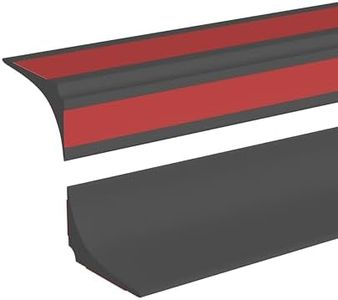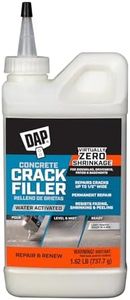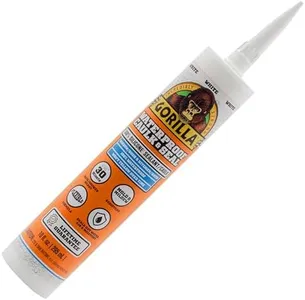We Use CookiesWe use cookies to enhance the security, performance,
functionality and for analytical and promotional activities. By continuing to browse this site you
are agreeing to our privacy policy
10 Best caulks
From leading brands and best sellers available on the web.Buying Guide for the Best caulks
Choosing the best caulk for your project can make all the difference in ensuring a long-lasting seal and a neat finish. With so many types available, it's important to pick one that matches your specific needs—whether you're sealing windows, bathrooms, or exterior siding. Understanding the different specs helps you get the right product for the job and avoid future issues like cracking, shrinking, or mold growth.Type of CaulkCaulk comes in several major types, including acrylic latex, silicone, polyurethane, and specialty blends. The type refers to the main ingredient and determines where you can use it and its resistance to elements like water, temperature, and movement. Acrylic latex is easy to use and best for indoor, paintable projects like trim and baseboards. Silicone is ideal for wet areas such as bathrooms and kitchens due to its water resistance but usually cannot be painted. Polyurethane offers superior flexibility and durability for outdoor use, particularly where materials expand and contract. Your project location and environment guide this choice: for dry, stable indoor use, acrylic is sufficient; for moisture or outside, silicone or polyurethane works better.
PaintabilityPaintability is whether the caulk can be painted over after it dries. This is important when you want the caulk to blend in with walls, trim, or other painted surfaces. Acrylic latex caulks are usually paintable, while pure silicone caulks are not. If you plan to match the caulk to your room’s color, go for a paintable variety. If matching color isn't critical, a non-paintable caulk may be sufficient, especially in areas like bathrooms where water resistance is more important.
Flexibility and MovementFlexibility indicates how much the caulk can stretch or compress without cracking. Some caulks are specifically formulated to move with building materials as they expand and contract with temperature changes. This is particularly important for exterior applications or areas prone to movement, like window and door frames. For areas with little movement, standard caulk works fine; for areas with lots of shifting or expansion, high-flexibility caulk is preferred.
Drying and Curing TimeDrying time is how quickly the caulk becomes dry to the touch, while curing time is how long it takes to fully set and reach its maximum strength and waterproofness. This spec is important when you need to finish a job quickly or when moisture may be present soon after application. Faster-drying caulks are convenient for small jobs or when painting is needed quickly, while longer-curing products might offer better durability or adhesion. Time-sensitive projects or planned painting should guide your choice here.
Mold and Mildew ResistanceMold and mildew resistance refers to additives in caulk that prevent fungus growth. This is especially important for bathrooms, kitchens, and other damp spaces. Some caulks are specifically labeled as resistant to mold and mildew, which helps keep your project clean over time. If the area will be exposed to high humidity or water, prioritize this feature. For dry areas, it may not be necessary.
Cleanup MethodCleanup method describes how easily you can clean up excess caulk or spills. Water-based caulks (like acrylic) can be simply wiped away with water, making them ideal for indoor DIY work. Solvent-based caulks (such as silicone or polyurethane) require mineral spirits or other chemicals for cleanup. If you want an easier, less messy application and cleanup process, especially if you're a beginner, water-based options are more forgiving.
















